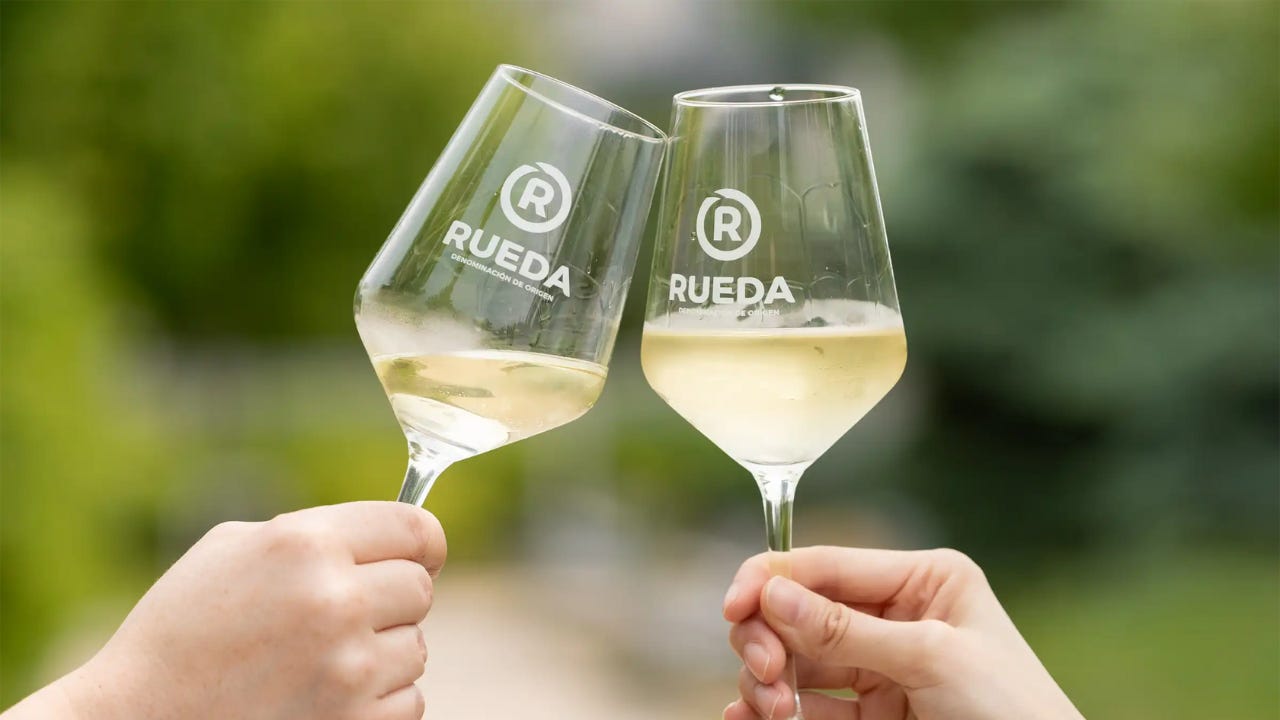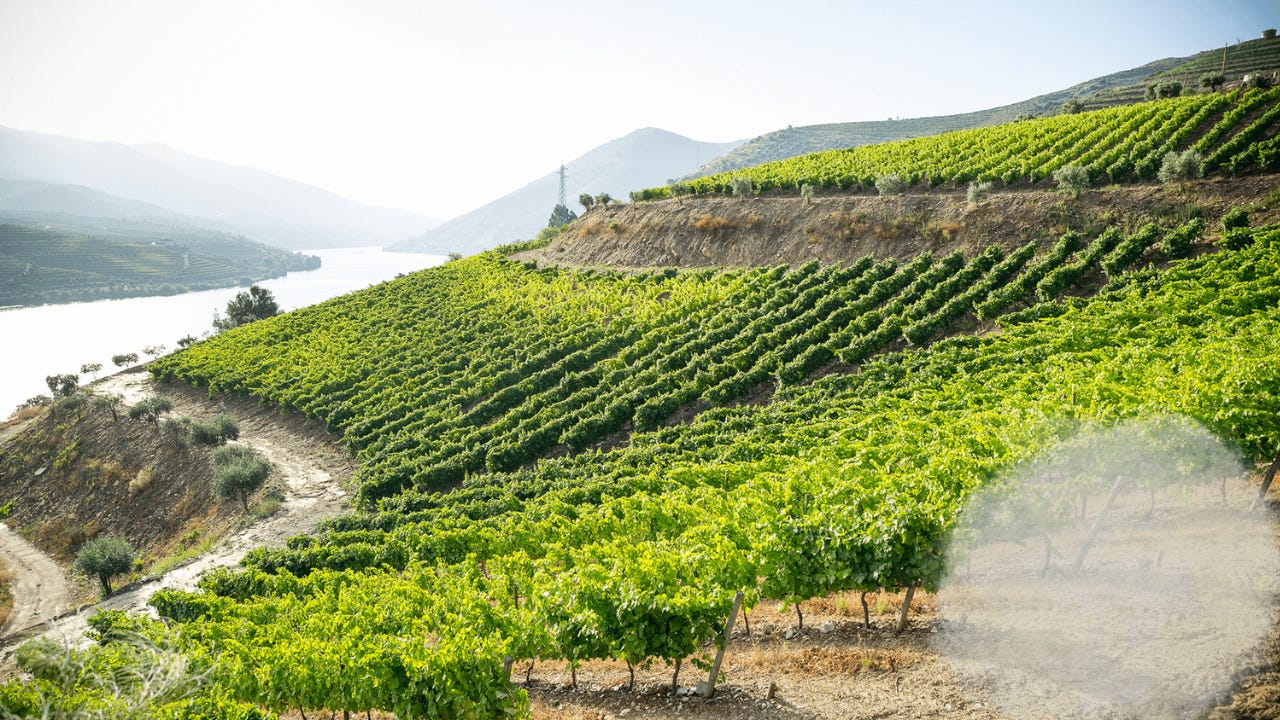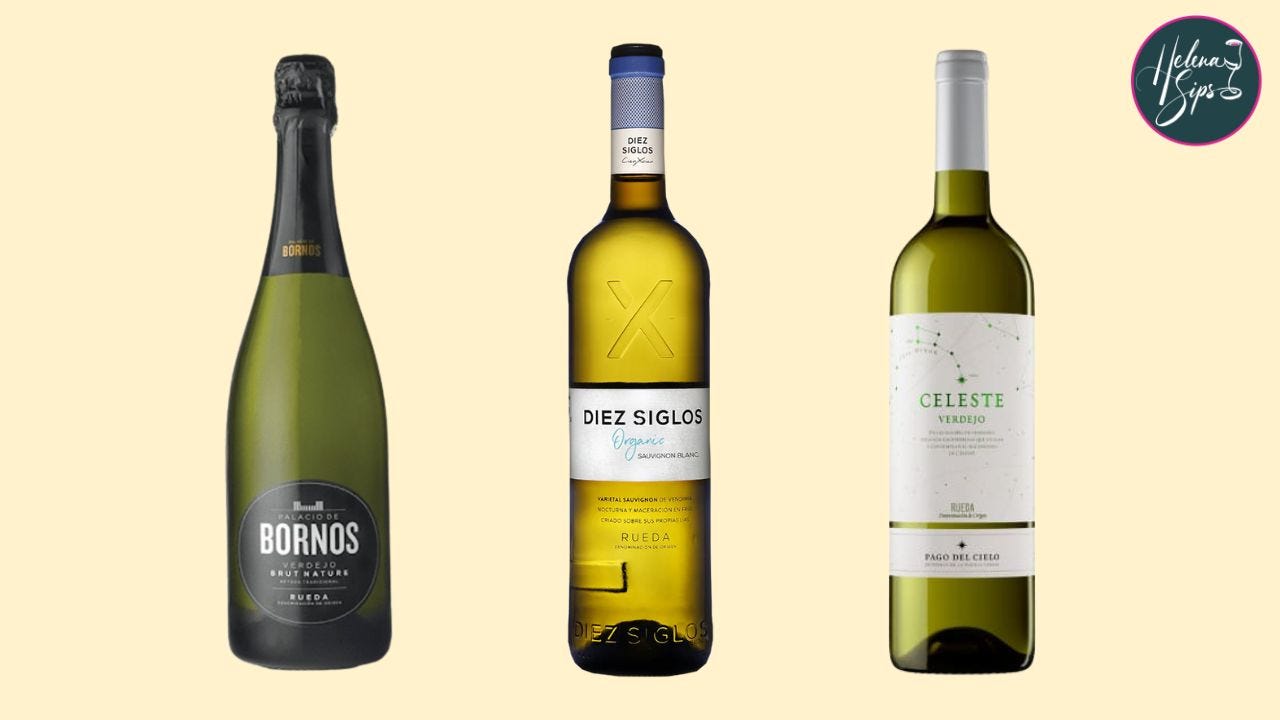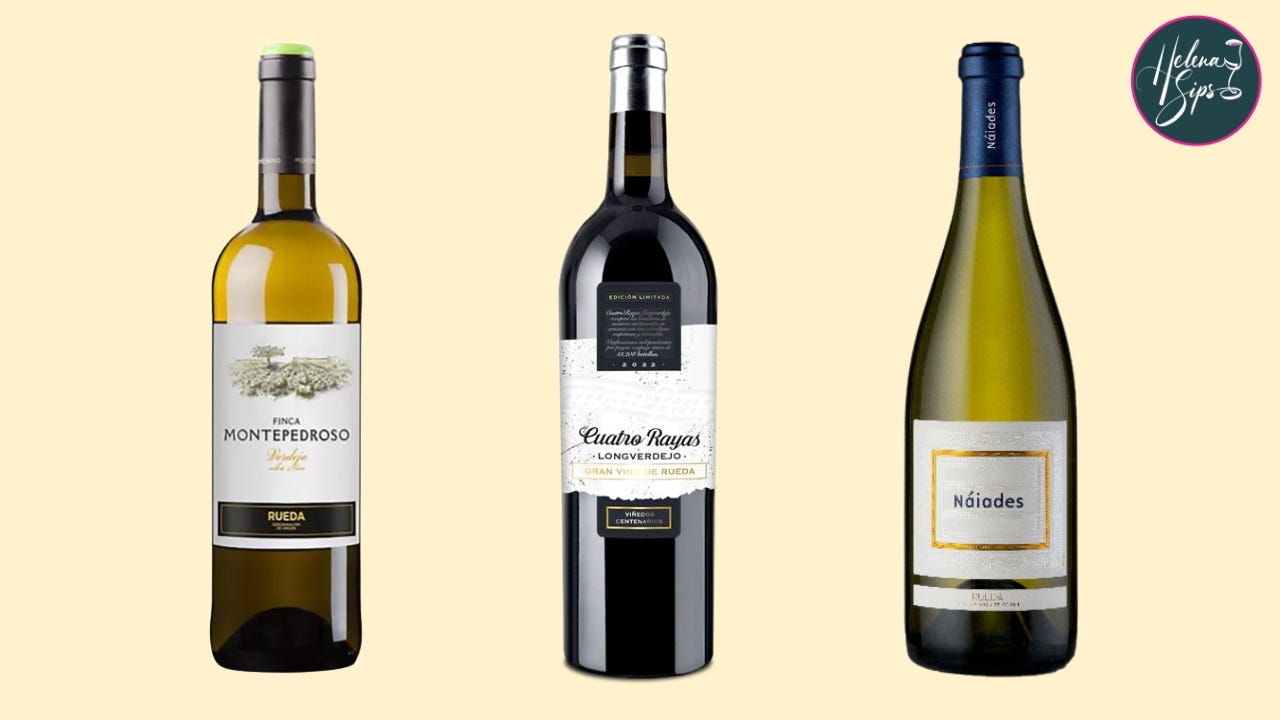Verdejo: Your new go-to white grape
A Sips Safari through the white wines of D.O. Rueda, Spain
Zoë Ombler the Epicurean Chef and I are hosting our first Corks & Canapés event: a wine masterclass held by me, with perfectly paired nibbles created by Zoë. The first topic for our wine lovers? The white wines of Rueda, Spain!
D.O. RUEDA: What you need to know
White wine fans looking to expand their repertoire will love getting to know the underrated, Spanish white wine region of D.O. Rueda. D.O. stands for ‘Denominación de Origen’, which essentially guarantees that the wine in the bottle comes from the legally defined Rueda region and meets its strict rules on grapes, vineyard practices and winemaking standards. You’ll find Rueda nestled high on the central plains of Castile and León, occupying a sweeping terrain around the town of Rueda in the provinces of Valladolid, Segovia and Ávila.
Verdejo: Rueda’s flagship grape
While a handful of reds and rosés are made in Rueda, the region is most famous for its expressive, indigenous white grape Verdejo, which has been grown in the area for centuries and truly finds its voice here. Classic notes for Verdejo are fennel and citrus, crushed herbs and salted almonds with crisp acidity and a texture reminiscent of lime wine gums. If you like Sauvignon Blanc, you will love Verdejo.
Given the fairly high altitudes of the area, which range roughly from 600m to 780m above sea level, nights are cool despite sunny days. This helps to give these grapes a particular freshness, while stony, lime-rich and well drained soils also contribute to wine’s hallmark purity and finesse.
Rueda White Wines: The Three Tiers
Rueda offers a surprisingly wide spectrum of styles, all centred on its star grape, Verdejo. At the entry level, you’ll find bright, stainless-steel wines that show the grape at its freshest: citrus, green apple, fennel and that signature almond-skin nip on the finish. Step up a tier and producers begin to work with lees, allowing the wines to gain texture, savoury depth and a more serious mineral core - proof that Verdejo can be far more than a simple aperitif. At the top of the tree sits Gran Vino de Rueda; a label that stands for Verdejo at its most refined and site-specific. The fruit for these must come from genuinely old, low-yielding vineyards, which naturally deliver greater concentration, depth and varietal character. Winemakers treat these parcels with corresponding reverence using extended lees ageing, careful bâtonnage and, in some cases, discreet oak to allow texture and complexity to build without overwhelming Verdejo’s hallmark freshness. Crucially, these wines express the stony, high-altitude terroirs of Rueda with far more clarity, resulting in structured, age-worthy whites that show just how serious this region can be.
Of course, there’s also the region’s quiet overachiever: sparkling Verdejo. Made in both traditional and charmat methods (like Prosecco), these wines take the grape’s natural acidity and herbal lift and turn it into something crisp, effervescent and unexpectedly elegant. Together, they show just how versatile Verdejo can be and why Rueda, long known for freshness, is fast becoming one of Spain’s most exciting white-wine regions.
What food to pair with Rueda wines?
Verdejo makes extremely versatile white wines. When fresh and young, it particularly loves anything light, zesty or tangy. Think grilled prawns, ceviche, green olives, goat’s cheese salads or sushi. Its citrus, fennel and herbal notes make it a natural partner for dishes with lime, coriander or a gentle chilli kick. Lees-aged or textural Verdejo has the weight for roast chicken, creamy pasta, octopus, richer tapas and dishes with saffron or smoked paprika. The added savoury depth means it stands up well to umami flavours. Gran Vino de Rueda pairs beautifully with more serious plates: roast monkfish, turbot, Iberian pork, truffle risotto or mature Manchego. Its structure and complexity echo white Burgundy territory, so it can carry richer sauces and layered flavours with ease. Here’s what the Epicurean Sailor Zoë Ombler paired at our inaugural Corks & Canapés event:
Deep Fried Feta Stuffed Olives: The perfect partner to our sparkling Verdejo
Manchego crusted potatoes with spicy roasted garlic ajonesa: An ideal pairing for our young and fresh verdejos.
Marinated paprika pork ribeye with red pepper sauce: This calls for the richer, more textured barrel-fermented wines.
THE WINES
Palacio de Bornos, Brut Nature NV, 100% Verdejo, 12% £17.95 from Ultracomida
Notable points: A great example of a traditional method wine made with 100% Verdejo.
Diez Siglos Organic 100% Sauvignon Blanc 2024, 13.5%, £11.99 from Kwoff
Notable points: A classic youthful Sauvignon Blanc to make the comparaion between this and Verdejo.
Celeste Verdejo 2024, 100% Verdejo, 13%, £15.50 from Vinissimus
Notable points: Young, simple Verdejo made in stainless steel for freshness and some lees for texture. Slightly riper style due to vineyard soils and location.
Finca Montepedroso 2024, 100% Verdejo, 12.5% , £14.49 from Strictly Wine
Notable points: Young, simple Verdejo grown at higher altitudes and made in stainless steel for freshness balanced by lees ageing and some batonnage for creaminess, texture and agebility.
Cuatro Rayas Longverdejo 2023, 100% Verdejo 12.5%, £17.95 from Terra Wines
Notable points: Gran Vino de Rueda is the top tier within the Rueda appellation; a category created to spotlight the region’s most serious, age-worthy, vineyard-specific wines. Made with pre-phylloxera, ungrafted vines, so this shows the character of the areas and the old vineyards. Use of oak, lees and batonnage for creaminess and spice.
Naìades 2021, 100% Verdejo, 14%, £27.37 from Decantalo
Notable points: Barrel ageing for texture, flavour and spice with lees aging for richness.
Have you ever tried wine from Rueda? Share your thoughts with me below!
Want more regional overviews and recommendations in your inbox? Subscribe to my free newsletter! Don’t want o miss out on the next Corks & Canapés event? Get your name on the list here to be the first to know.






